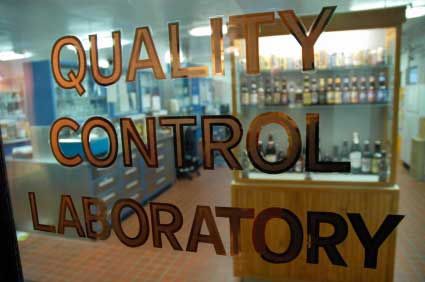How Does the “Classification of Napa Valley” Discussion Relate to Texas Wine Quality?
Tom Wark posted a Fermentation Blog yesterday that explored the future of Napa Valley and the issue of the commoditization of Chardonnay and the soon to be similar fate for the region’s Cabernet Sauvignon. He cites the following:
“…Napa is to California wine what Yosemite is to our National Parks. An economic underworld of oversupply is shifting the price of Napa Cabernet Sauvignon down, says a November story in Wines and Vines magazine. The story’s author and President of Enologix, Dr. Leo McCloskey, says, “Figures show Cabernet Sauvignon is exhibiting early signs of commoditization.”
Buried at the very end of McCloskey’s press release was the answer. And it’s a fascinating proposition: “Worldwide over-planting creates an oversupply, resulting in a downward trend of lower prices that cannot be avoided without classification or regulation of the type found in Europe.”
Wark states, “I am fascinated by both the idea of classifying Napa Valley in some way and by the fact that it will never happen in any official or semi-official way.”
This discussion on Napa Valley’s future actions in response to commoditization caused my ears to perk up as in Texas we are again in the discussions of forming a different sort of rating system, one that involves basic wine quality. While being on the opposite ends of the wine spectrum, these two topics have a host of similarities, the biggest of which Wark correctly identifies, is that in the United States it will never be something that can be mandated or legislated by government into existence.
Here in Texas, we have a rapidly growing wine industry with many new vineyards and wineries, and there are some involved in the business of grape growing and winemaking that still have a lot to learn if they truly want to ascend the ladder of wine quality. The wine quality efforts in Texas have included technical support of experts in viticulture and enology provided by the state. They’ve been doing their thing in private and out of the eye of the Texas wine consuming public.
I applaud these efforts. But, they still seem to be not enough particularly when it comes to the dilemma facing Texas wine consumers as to which bottles manifest a serious level of wine quality. Thus, discussions have again turned to establishing some form of wine quality benchmark visible in the marketplace, agreeing on a process for analysis and evaluation, and the organizational and funding structure to support the process.
From a series of meeting held on this subject in Texas over the period 2003-2004, the one thing that everybody could agree on was that it was something that could NOT be mandated or legislated into existence, even if by a well intentioned state department of agriculture. The only path forward was to create an opt-in system based on the following concept:
1. All submissions would be voluntary and at the discretion of the winery (e.g. It could submit none, any, or all wines they saw fit to submit); however, they would have to be wines made to Texas appellation.
2. Evaluations would have to be confidential and independent from winery influence.
3. Evaluations would include a combination of wine analyses and/or sensory evaluation by a panel of qualified independent in-state and out-of-state experts (rotated regularly).
4. The Organization has to be a reputable operation so that consumers believe that it was independent and credible.
5. It needs to be self-funded by those that submit wines (but could have financial support from other sources, if available).
6. The output (TBD) could be a market-visible designation (sticker or foil) with possibly other aspects or activities that would aid visibility and marketing of high quality Texas wines.
I agree with Wark’s statement: “It’s not that Americans are opposed to ranking things. It’s that they are opposed to official and particularly governmental quality rankings.” Therefore, this is something that the Texas wine industry has to do itself in a responsible and credible manner.
My questions are…Does the Texas wine industry (and its viticultuers, winemakers and winery owners) have the stomach for it? Do they see the benefits that can arise from such a wine quality system dispite some concerns? Are there leaders among them who are brave enough to put their wines to independent analysis and evaluation? Is the time right?
Well, I believe that the actions or possibly the inactions of early 2011 will tell. How do you feel?


Napa brought all this on itself, Russ. Why should I feel sorry for its winemakers? And, to paraphrase by pal Robert Whitley when he and I talked about this, you can find non-commoditized Napa wines. You just have to look for them. And isn’t the same true everywhere else in the world? The exception, of course, is Bordeaux, and is that what Wark wants? Wine no one can afford to buy?
I agree with your statements. The core of my manifesto is that any system that they come up with to handle their situation has to be a voluntary one. No one will allow a state mandated classification like there is in Bordeaux.
The same will be the case if we come up with a wine quality system for Texas wines.
Russ